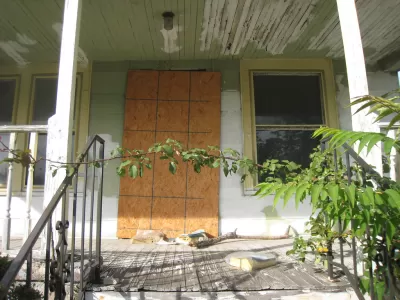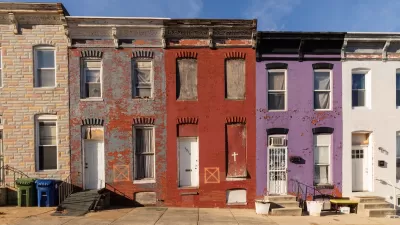Surveyors hitting the streets in Cleveland have found that the problem of vacant homes in the city isn't as bad as first feared.

Through a partnership with the non-profit Thriving Communities Institute, Cleveland is getting a better hand on understanding its stock of vacant homes that litter parts of the city. Michelle Jarboe of the Cleveland Plain Dealer reports that an assessment carried out by Thriving Communities, using a 16-person team, has determined that 8.8 percent of the 158,851 properties surveyed can be classified as being vacant. Of those, more than a third "might be a lost cause." This would result in a total of 6,100 structures that would need to be demolished, at a cost of $60 million to the city. However, there is an upside to the survey results.
Here's the good news: The blight isn't as bad as it appeared, based on past estimates from the city and other researchers…
The pool of deeply tainted properties actually has been shrinking, thanks to demolition, fewer foreclosures and a healthier housing market. The tally of decrepit houses fell from 2013, when the city found more than 7,700 distressed or empty homes. Nearly every neighborhood saw improvement.
Jarboe reports that a recent study found that demolition programs for vacant properties in other cities, including Detroit, has resulted in the value of occupied homes within 500 feet of the demolished property increasing 4.3 percent.
FULL STORY: Vacant houses, blighted buildings still plague Cleveland, but problem is shrinking: Taking Stock

Alabama: Trump Terminates Settlements for Black Communities Harmed By Raw Sewage
Trump deemed the landmark civil rights agreement “illegal DEI and environmental justice policy.”

Planetizen Federal Action Tracker
A weekly monitor of how Trump’s orders and actions are impacting planners and planning in America.

Why Should We Subsidize Public Transportation?
Many public transit agencies face financial stress due to rising costs, declining fare revenue, and declining subsidies. Transit advocates must provide a strong business case for increasing public transit funding.

Understanding Road Diets
An explainer from Momentum highlights the advantages of reducing vehicle lanes in favor of more bike, transit, and pedestrian infrastructure.

New California Law Regulates Warehouse Pollution
A new law tightens building and emissions regulations for large distribution warehouses to mitigate air pollution and traffic in surrounding communities.

Phoenix Announces Opening Date for Light Rail Extension
The South Central extension will connect South Phoenix to downtown and other major hubs starting on June 7.
Urban Design for Planners 1: Software Tools
This six-course series explores essential urban design concepts using open source software and equips planners with the tools they need to participate fully in the urban design process.
Planning for Universal Design
Learn the tools for implementing Universal Design in planning regulations.
Caltrans
Smith Gee Studio
Institute for Housing and Urban Development Studies (IHS)
City of Grandview
Harvard GSD Executive Education
Toledo-Lucas County Plan Commissions
Salt Lake City
NYU Wagner Graduate School of Public Service




























